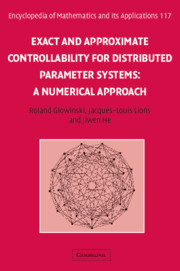9 - Optimal control of systems modelled by the Navier-Stokes equations: Application to drag reduction
from Part III - Flow Control
Published online by Cambridge University Press: 04 August 2010
Summary
Introduction. Synopsis
We will conclude this volume by discussing some aspects (mostly computational) of the optimal control of systems governed by the Navier-Stokes equations modeling unsteady incompressible Newtonian viscous fluids. This chapter can be viewed as a sequel of Chapter 3, where we addressed the controllability of Stokes How. The methods and results presented hereafter were not available at the time of Glowinski and J.L. Lions (1995), explaining thus the need for a new chapter.
To begin with, let us say that engineers have not waited for mathematicians to successfully address flow control problems (sec, for example. Gad Hcl Hak, 1989: Busehnell and Hefner, 1990 for a review of How control from the Engineering point of view); indeed Prandtl as early as 1915 was concerned with flow control and was designing ingenious systems to suppress or delay boundary layer separation (sec Prandtl, 1925). The last two decades have seen an explosive growth of investigations and publications of mathematical nature concerning various aspects of the control of viscous flow, good examples of these publications being Gun/burger (1995) and Sritharan (1998). Actually, the above two references also contain articles related to the computational aspects of the optimal control of viscous flow, but, usually, the geometry of the flow region is fairly simple and Reynolds numbers rather low. Some publications of computational nature arc llou and Ravindran (1996), Ghattas and Bark (1997), and Ito and Ravindran (1998); however, in those articles, once again the geometry is simple and/or the Reynolds number is low (more references will be given at the end of this section).
Information
- Type
- Chapter
- Information
- Exact and Approximate Controllability for Distributed Parameter SystemsA Numerical Approach, pp. 371 - 425Publisher: Cambridge University PressPrint publication year: 2008
